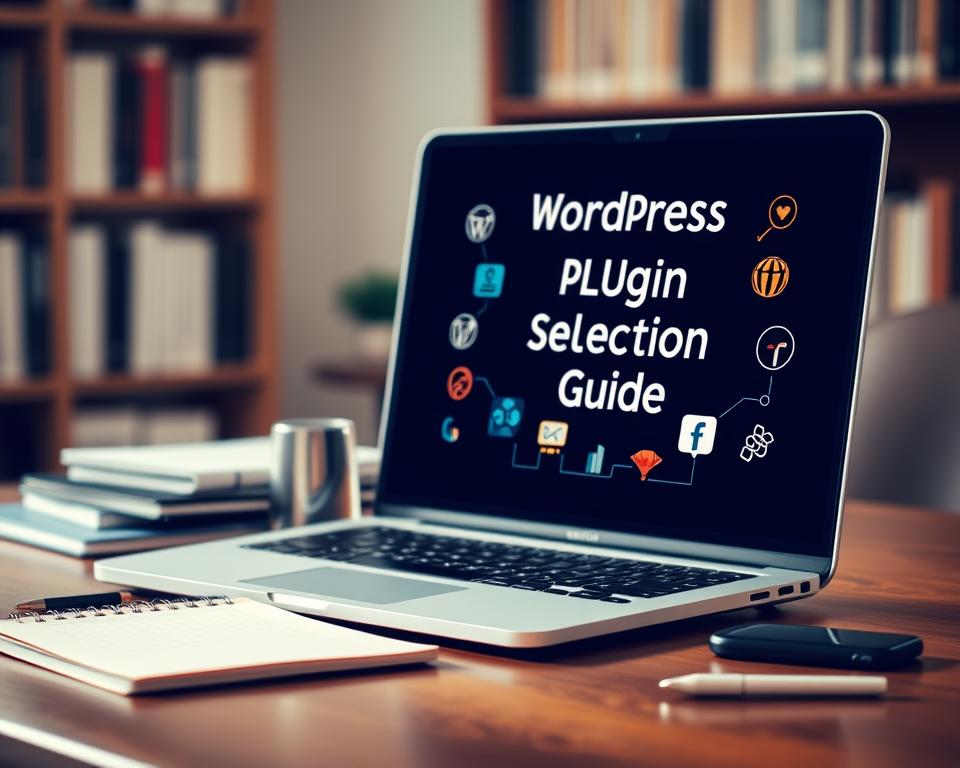Perfect SEO for WordPress: Quick Handbook
Were you aware that Seventy-eight percent of businesses powered by WordPress see better search-engine positions after deploying focused SEO techniques. WordPress SEO fine-tuning has grown into a critical component for digital triumph. It converts sites from hidden to unmissable for search engines.
WordPress provides a formidable framework for webmasters seeking to increase their search presence. With integrated capabilities and adaptable tuning tools, WordPress SEO offerings can help businesses climb results pages effectively. SEO Marketing Nerds suggest harnessing these native capacities to build a solid digital footprint.
The following guide will lead you through the best SEO for WordPress, showcasing insider tactics that turn your site into a ranking magnet. Be you a WordPress SEO consultant or a business owner, these approaches will let you unleash your site’s full potential using SEO with WordPress.
From understanding basic optimization methods to executing sophisticated strategies, this guide supplies ready-to-use guidance to enhance your WordPress website’s search results. Gear up to delve into the realm of WordPress SEO and watch your search presence climb.
Grasping WordPress SEO Foundations
WordPress and SEO are in seamless sync, raising your site’s exposure in search results. As a powerful content management system, WordPress lays a strong base for SEO strategies.
Grasping WordPress SEO essentials can revolutionize your site’s digital footprint. It provides distinct perks for SEO specialists and site owners equally:
- Semantic HTML markup
- Mobile-responsive layouts
- User-friendly content editing
- Broad plugin library for SEO enhancements
Choosing WordPress.org instead of WordPress.com grants you complete control for SEO customization. The host-your-own version enables for deeper customization, crucial for in-depth SEO methods.
WordPress’s SEO strengths are numerous:
- Adjustable permalink structures
- Rapid content posting
- Straightforward metadata handling
- Built-in features for search-engine discovery
To improve SEO on a WordPress site, it’s imperative to grasp these fundamental aspects. Powerful WordPress SEO demands a strategic blend of technical tuning and valuable content.
Expert tip: A WordPress SEO specialist always prioritizes user experience together with search-engine needs.
Must-Have WordPress SEO Settings
Setting up the proper SEO options is vital for any WordPress site. A well-configured WordPress SEO configuration can dramatically boost your site’s search-engine success and visibility. Professional WordPress SEO companies stress a strategic approach to these core configurations.

Consider the main settings that turn your WordPress site optimized for search:
- Tweak Permalink Structure
- Use readable, descriptive URL formats
- Include focused keywords in permalinks
- Avoid long, complex URL strings
- Build XML Sitemap
- Provide a complete sitemap
- Submit to Google Search Console
- Verify all key pages are indexed
- Activate SSL Certificate
- Switch to HTTPS for enhanced security
- Strengthen WordPress Google SEO ranking signals
- Safeguard user data
A WordPress SEO premium plugin can make easy these settings. During your WordPress SEO assessment, focus on building a solid foundation that search engines will favor. Focus on organized structure, quick loading speeds, and logical content hierarchies.
Pro Tip: Ongoing optimization is critical to sustaining strong search-engine results.
Don’t forget, these WordPress SEO-friendly settings are your initial move toward enhanced search visibility and ranking results.
Practical SEO Usage for WordPress
To boost your WordPress site’s visibility, a well-planned approach is essential. Understanding how to implement SEO to WordPress can significantly increase your digital visibility and pull in more targeted traffic.
Several tactics can enhance your site’s search-engine standing. These include:
- Craft title tags and meta descriptions
- Create engaging content
- Apply WordPress local SEO techniques
- Develop solid internal architecture
- Enhance image optimization
WordPress SEO best practices highlight multiple critical aspects. Content quality remains the most important factor in search-engine rankings. Your website should deliver useful information that meets user queries.
For brick-and-mortar companies, targeting geographic-specific keywords is vital. This involves embedding location-based phrases and creating content that speaks with your community.
Powerful SEO is about creating a seamless user experience while indicating relevance to search engines.
Back-end optimization is a critical component of your WordPress SEO plan. Ensure your website is fast, is mobile-optimized, and has a logical, logical structure. This allows for search engines to understand your site.
Finding the Perfect WordPress SEO Tool
Choosing the best-fit SEO plugin can significantly boost your WordPress website’s search success. No matter if you’re a newcomer or an experienced SEO specialist, you require capable tools to refine your site efficiently.
When evaluating WordPress SEO plugins, consider these critical factors:
- Intuitive interface for WordPress on-page SEO
- All-in-one optimization features
- Live content analysis capabilities
- XML sitemap creation
- Schema markup support
Leading WordPress SEO plugins to explore include:
- Yoast SEO: Feature-rich content optimization tool
- All in One SEO Pack: Comprehensive feature set
- Rank Math: Granular configuration options
A WordPress SEO agency typically suggests plugins that streamline technical optimization while offering detailed site analysis. Important factors include usability, performance overhead, and alignment with your specific SEO website WordPress objectives.
Pro tip: Always test plugins in a development environment before live implementation.
Select a plugin that matches your technical expertise and provides insightful guidance for enhancing your site’s search-engine rankings.
Improving On-Page SEO
Mastering on-page SEO is essential for WordPress sites striving for improved search-engine results. Simple SEO WordPress tactics can greatly increase your content’s visibility. This, in turn, attracts more organic traffic to your site.
Key optimization techniques include:
- Writing compelling title tags with target keywords
- Writing descriptive meta descriptions
- Organizing content with keyword-rich header tags
- Building clean URLs
When utilizing WordPress SEO support, it’s critical to craft descriptive title tags. Keep them between fifty to sixty characters long. Place your main keyword at the start and include your brand name at the conclusion. These strategies assist search engines get your content’s context.
For best results, focus on polishing your content format. Use h1 tags for main titles, h2 for section headings, and h3 for subsections. This logical approach enhances both readability and SEO performance.
URL optimization is another vital aspect of SEO optimization WordPress. Guarantee your URLs are short, meaningful, and contain targeted keywords. Skip complicated structures that can puzzle users and search engines equally.
Remember: On-page SEO is about creating valuable, easily understood content that helps both users and search algorithms.
Content Optimization Strategies
Creating impactful content is the bedrock of WordPress search optimization. An effective WordPress SEO optimization service requires a strategic content approach that attracts both search engines and visitors.
Using WordPress longtail keyword SEO requires several critical steps:
- Perform thorough keyword research to identify targeted search terms
- Create content that clearly answers user questions
- Create distinct, meaningful insights not found elsewhere
- Structure content for clarity
When improving SEO on WordPress, focus on creating high-quality content that provides genuine value. Quality outweighs quantity every time. Use long-tail keywords naturally within your text, so they blend seamlessly with the content.
To improve SEO WordPress performance, adopt these content approaches:
- Write detailed articles
- Regularly update existing content
- Incorporate internal linking to link related posts
- Stick to a consistent publishing schedule
Excellent content is the connection between your website and your readers’ needs.
By applying these WordPress search optimization techniques, you’ll deliver engaging content that not only shows up high but also provides tangible value to your visitors.
Back-End SEO Strategies
Technical SEO is the heart of a robust WordPress site optimization roadmap. The optimal technical elements can dramatically improve your website’s search-engine results and user experience.
When setting up SEO for WordPress, multiple key technical aspects need attention. Site speed is a primary ranking factor that directly influences search results. Google’s Core Web Vitals now assess websites based on loading performance, interactivity, and visual stability.
- Optimize site speed through caching systems
- Reduce HTTP requests
- Compress and scale images
- Use browser caching
For WordPress site SEO optimization, consider adding structured data and schema markup. These technical elements enable search engines understand your content more precisely. This can often boost rich snippet displays in search results.
Mobile optimization is another critical technical SEO component. With mobile-first indexing, guaranteeing your WordPress website performs smoothly across devices is mandatory. Responsive design and speedy mobile performance are a must-have for high rankings.
Pro Tip: Use premium SEO WordPress plugins to ease technical optimization tasks.
By mastering these technical SEO tactics, you’ll build a robust foundation for enhanced search-engine visibility and user interaction on your WordPress website.
WordPress Image SEO
Images is essential for WordPress sites. Optimizing images for SEO can noticeably enhance your site’s speed and search results. Properly compressed and tagged images improve user experience and SEO.
Successful image optimization involves several important strategies:
- Compress images to minimize file sizes without losing quality
- Use keyword-rich file names with relevant keywords
- Add meaningful alt text for search-engine understanding
- Use lazy loading to speed up page load times
When tuning your WordPress site for SEO, keep in mind these image optimization techniques:
- Select the right file format (JPEG for photographs, PNG for graphics)
- Resize images before uploading
- Use WordPress SEO plugins like Yoast or EWWW Image Optimizer
“Images are not just visual elements; they’re valuable SEO tools when used intentionally.” — Digital Marketing Expert
Incorporating WordPress SEO internal links and WordPress SEO links within image captions can further improve your website’s search presence. Keep in mind, well-optimized images result in quicker load times and improved user engagement.
Site Architecture & Internal Links
Internal linking is a vital element in technical SEO for WordPress, greatly improving your site’s search-engine ranking. It assists search engines understand your site’s structure and distributes page authority across pages. This is crucial for improved search-engine performance.
When optimizing your WordPress site for search engines, remember these vital internal linking strategies:
- Create a logical site hierarchy for easy navigation
- Use descriptive anchor text for context
- Link to related content on your WordPress homepage
- Emphasize connecting with your money pages
For efficient SEO on your WordPress site, link contextually. This means adding links where they provide real value to readers. Strategic internal linking dramatically benefits WordPress on-page SEO, aiding search engines in understanding your site’s content structure.
Pro Tip: Think of internal links as a navigation system that guides both users and search engines through your website’s ecosystem.
By embracing a strategic internal linking method, you’ll enhance user experience, simplify site navigation, and raise your WordPress site’s search-engine exposure.
Speeding Up WordPress
Site speed is a major factor in WordPress SEO success. Search engines, like Google, favor websites that render quickly. This makes speed optimization essential for improved search rankings and a smoother user experience.
To boost your WordPress site’s speed, begin by assessing its current performance with tools like Google PageSpeed Insights. This tool pinpoints areas for enhancement in loading times.
- Apply caching plugins for WordPress SEO optimization
- Use a Content Delivery Network (CDN)
- Minimize HTTP requests
- Compress images and media files
Yoast SEO WordPress users can access extra speed optimization features. Lowering server response times and decluttering your WordPress database are important for faster site performance.
Important WordPress SEO hints for speed include:
- Select lean themes
- Eliminate unnecessary plugins
- Activate browser caching
- Shrink and optimize images
By implementing these SEO on-page WordPress strategies, you’ll create a speedier, leaner website. This will enable it to perform better in search results.
Mobile SEO for WordPress
In today’s connected era, mobile optimization is vital for WordPress sites. Google now evaluates mobile versions as priority, influencing your site’s search rankings. A WordPress SEO guide must highlight responsive design for a consistent user experience on all devices.
For device-optimized WordPress sites, consider these SEO optimization WordPress tactics:
- Select a responsive WordPress theme that adapts to different screen sizes
- Optimize page loading speed for mobile devices
- Make sure legible text without zooming
- Build touch-friendly navigation elements
When optimizing for WordPress, test your site’s mobile performance with Google’s Mobile-Friendly Test. WordPress SEO optimizer plugins can quickly identify and resolve mobile issues.
Top mobile optimization techniques comprise:
- Compress images for faster mobile loading
- Use responsive design frameworks
- Implement AMP (Accelerated Mobile Pages)
- Fine-tune SEO title WordPress for mobile search results
By focusing on mobile optimization, you improve user experience and increase search rankings. Search engines favor sites with great mobile performance, boosting your visibility in search results.
In Closing
Excelling at the top SEO WordPress tactics demands persistence and a commitment to lifelong learning. The techniques we’ve outlined offer a reliable foundation for boosting your website’s search-engine visibility. From choosing the right SEO plugins to making technical optimizations, you now have a complete set of tools to enhance your site’s performance.
SEO with WordPress is a never-ending journey of improvement, not a single task. By consistently applying these SEO tactics, you’ll see your site’s positions climb and attract more organic traffic. The essence lies in being agile and continually learning about the latest search-engine algorithms and optimization methods.
SEO Marketing Nerds suggest embracing a comprehensive approach to SEO on WordPress. This means prioritizing content quality, technical performance, user experience, and strategic keyword use. Each element is critical for search engines to understand and rank your site successfully.
As you move forward to apply SEO on WordPress, keep in mind that steady effort are your most valuable assets. Measure your progress, study your outcomes, and be willing to adjust your tactics. With consistent effort and the right methodology, you’ll experience notable enhancements in your website’s search-engine results.

